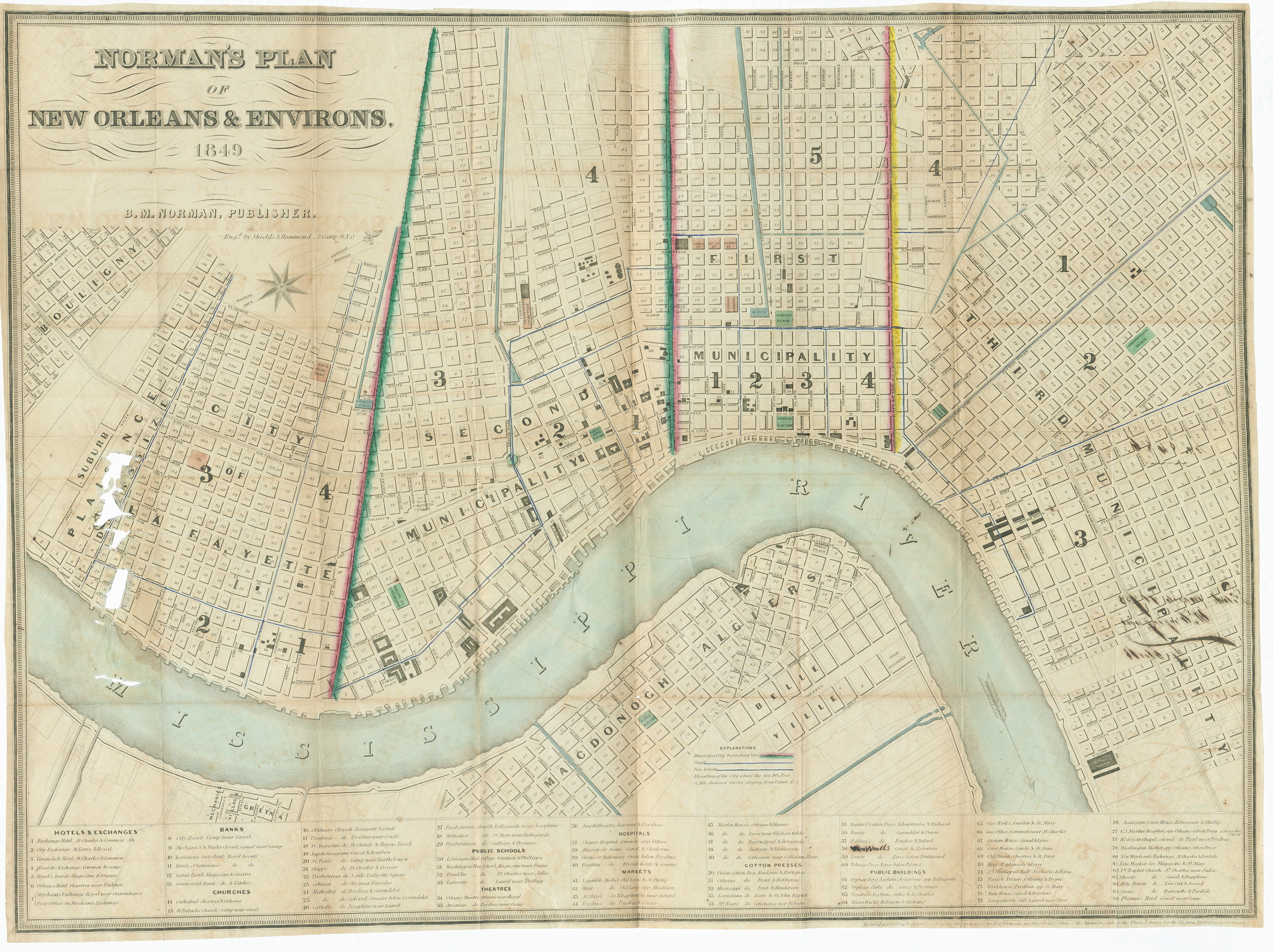Norman's Plan of New Orleans and Environs, 1849
Biographical / Historical
During the period from 1836 to 1852, the city was legally divided into three separate municipalities (the original French/Spanish city was the First Municipality, the newer "American" section was the Second, and the area to the east of the "old city" was the Third). While there remained a single Mayor for the entire city, most other functions were exercised by separate agencies within the individual municipalities. Thus there was a Council for each municipality (as well as a General Council with authority in matters not delegated to the specific bodies). Similar arrangements existed for fiscal agencies and for other offices, such as surveyors, attorneys, and police department. In 1852, the three municipalities, along with the separate City of Lafayette, were consolidated into a new government for the City of New Orleans.
Each municipality was to be governed by a Council composed of a Recorder and a number of Aldermen to be determined on the basis of censuses conducted for the purpose of making such an apportionment. They were to be elected by the qualified voters of the municipality. The qualifications and duties of the Recorder and Aldermen remained for the most part as they had existed under the prior laws of the city. Other existing laws of the city of New Orleans also remained in effect under the new charter, but each municipality was given the right to make and enforce public laws within its limits and was also authorized to regulate and make public improvements. Certain legislative and administrative powers were specifically given to the General Council of the city.
Ordinance #26 (April, 1838) provided for the appointment of fourteen permanent committees: Finance, Paving, Prisons, Levees & the Harbour, Improvements, Claims, Public Health, Conflagrations, Judiciary, Public Works, Vigilance over the Guard, Police, Charity, and Public Education. Each committee was to be composed of three members, except for the Committee on Charity, which was to be made up of one member from each ward. This system of government remained in effect until the consolidation of the city as a single body in 1852. In the consolidated city:
- The First Municipality became the Second Municipal District
- The Second Municipality became the First Municipal District
- The Third Municipality became the Third Municipal District
Repository Details
Part of the City Archives Repository
City Archives & Special Collections
219 Loyola Avenue
New Orleans LA 70112
504-596-2610
archivist@nolalibrary.org

